Complete Solutions to Level 1 of chapter GEOMETRY of Class 8 book with complete answers and questions
| Class 8 | MATHS |
| Chapter | GEOMETRY |
| PEARSON IIT JEE FOUNDATION | Level 1 |
| Number Of Questions | 32 |
| Academic Year | 2023-24 |
In the figure below (not to scale) , `bar(PQ)||bar(TS)`, reflex `/_ QRS=300^(@)` and `x-y =30^(@)`. The measure of `y` will be
 01:52View Solution
01:52View SolutionIn a triangle ABC, if `/_ A gt /_ B gt /_C` and the measures of `/_A , /_B ` and `/_ C` in degrees are integers, then the least possible value of `/_ A` is
01:31View Solution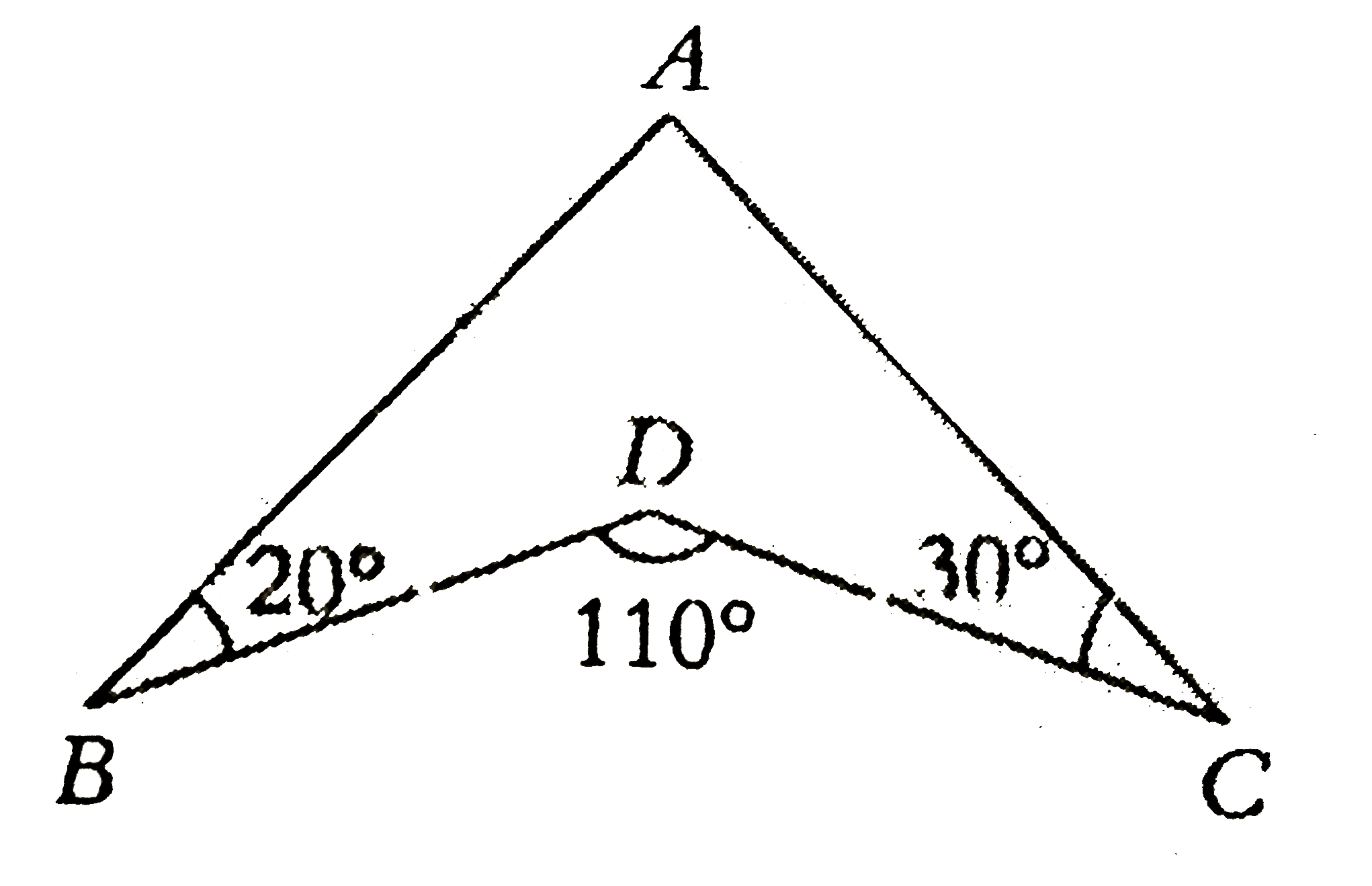
In the above figure, `/_ ABD =20^(@), /_ BDC =110^(@)` and `/_ DCA =30^(@)` . What is the value of `/_ BAC` ?02:32View SolutionIn the figure below (not to scale), `bar(MR )_|_ bar(MP), bar(MQ) _|_ bar(MN)`, and `bar(MS)` is bisector of `/_ RMQ` . If `/_ PMN=50^(@)` , then find the measure of `/_ RMS`.
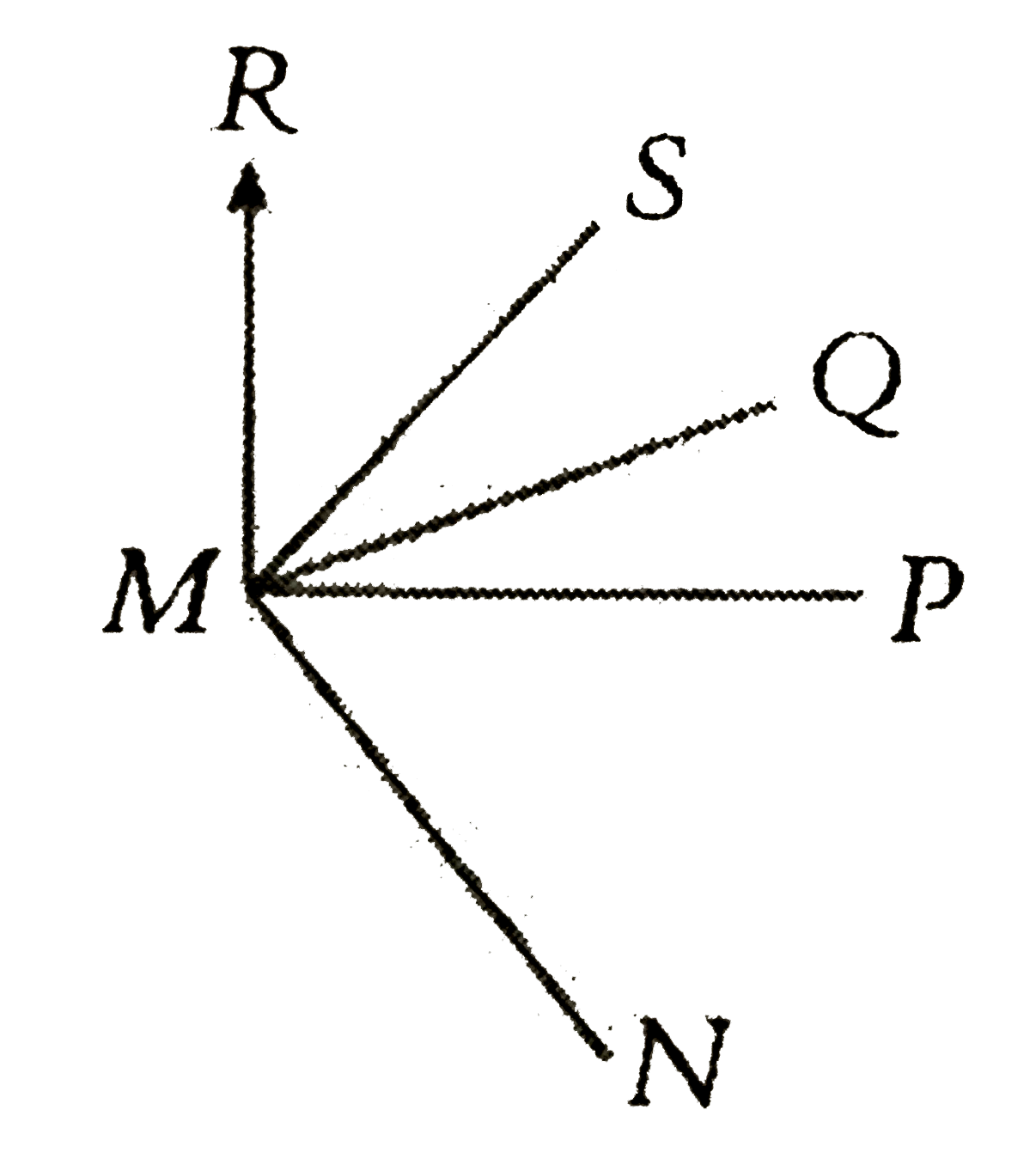 02:32View Solution
02:32View Solution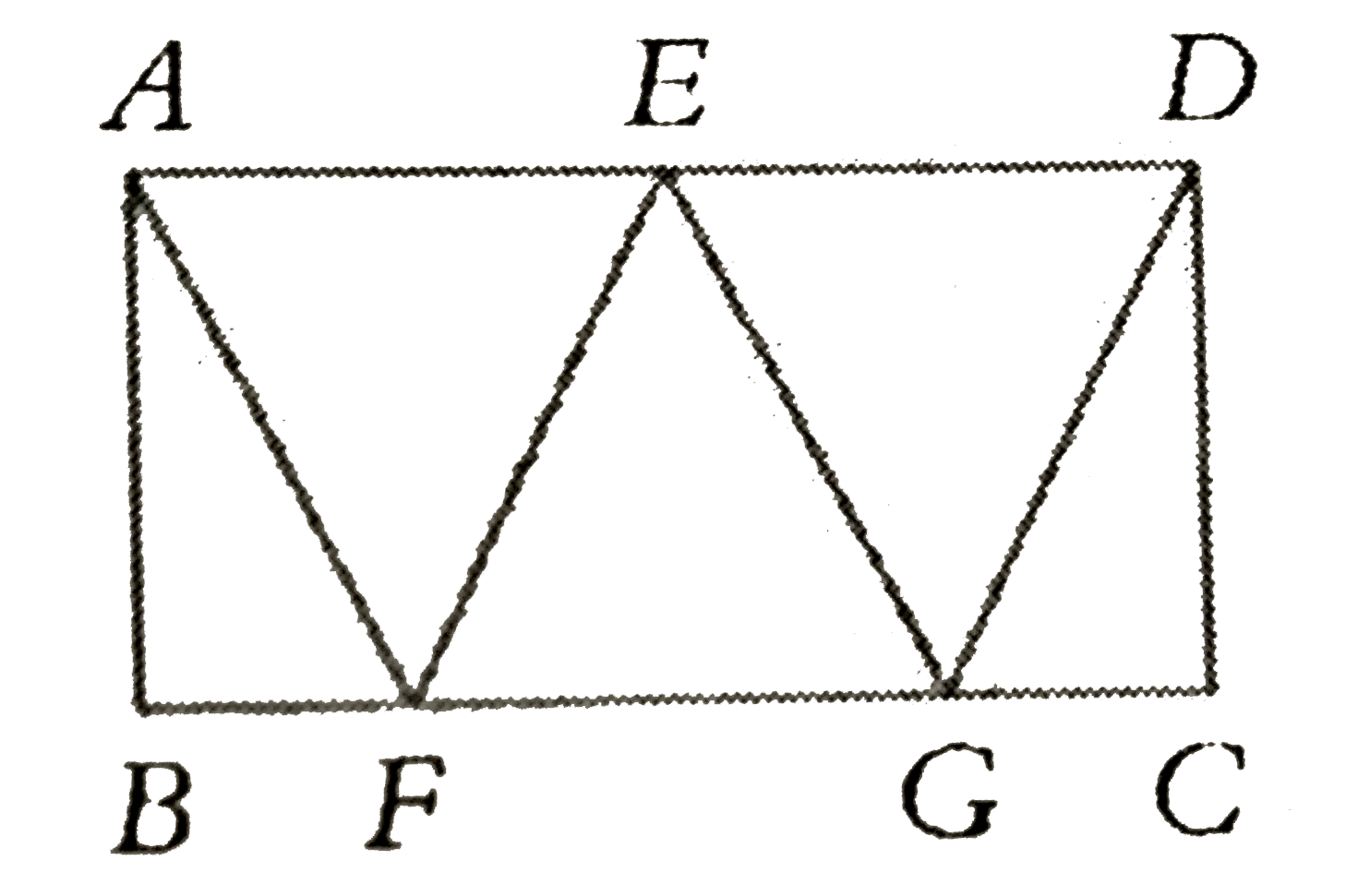 In the figure above (not to scale), `bar(EF)||bar(GD), bar(AF)||bar(EG), bar(AD)||bar(BC)` and `/_ DCG =100^(@)`. If `/_CDG=40^(@)`, then find `/_AEF`.02:15View Solution
In the figure above (not to scale), `bar(EF)||bar(GD), bar(AF)||bar(EG), bar(AD)||bar(BC)` and `/_ DCG =100^(@)`. If `/_CDG=40^(@)`, then find `/_AEF`.02:15View SolutionIn the figure below, `bar(BC)|| bar(EF),BC=EF ` and `DF =AC`. Which of the following congurency axiom(s) is`//` are suitable to prove that `Delta BCA =Delta EFD` ?
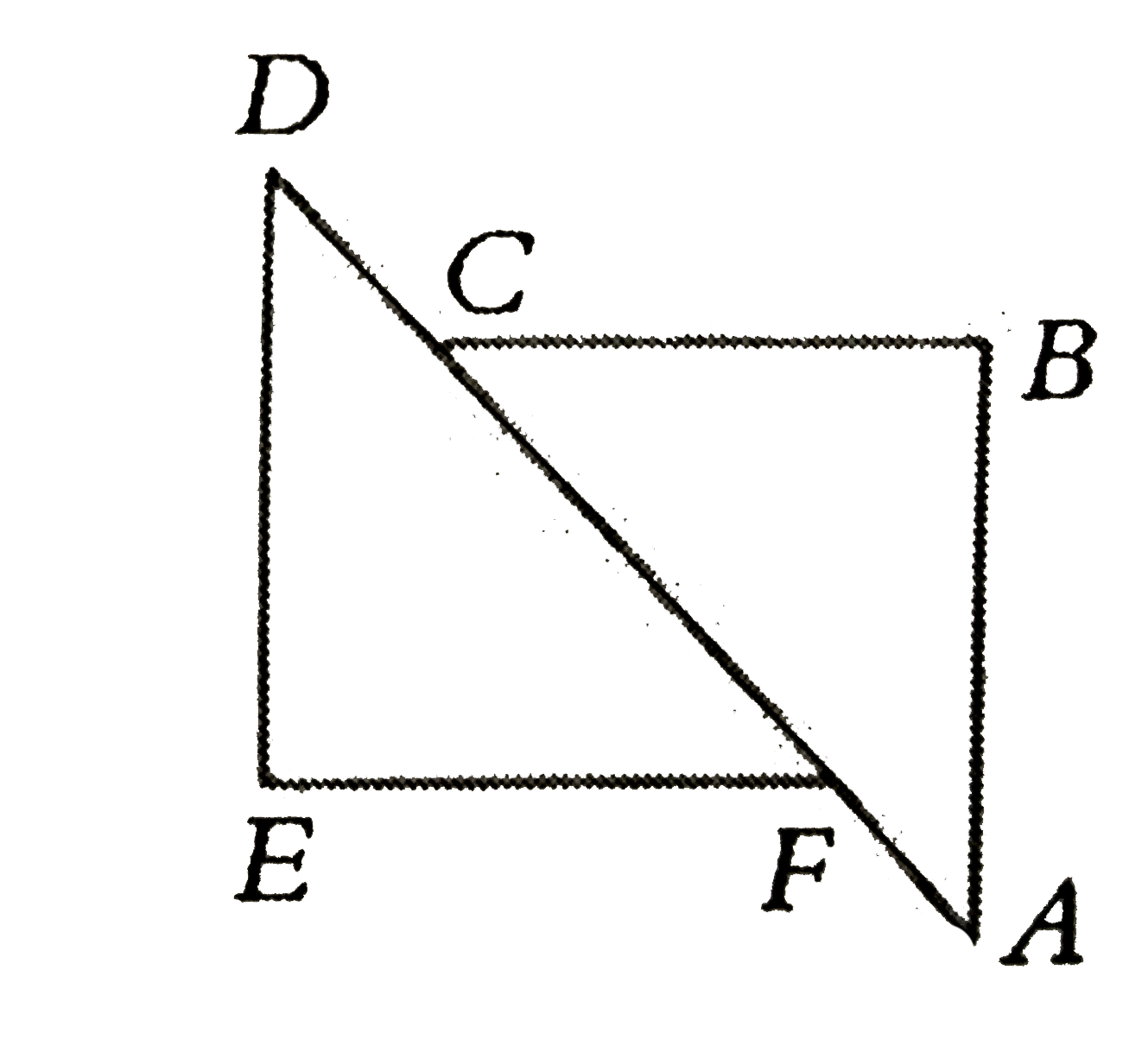 02:20View Solution
02:20View Solution
In the above figure (not to scale), E and F are the mid points of AB and CD respectively.
`bar(AB) | |bar(CD),bar(BC)||bar(AD),/_ADE =70^(@)`, AND `/_BCE =40^(@), /_DEC` is02:33View SolutionWhat is the number of lines of symmetry for a parallelogram ?
01:29View SolutionGiven below are some figures. Choose the image of the given figure with respect to the given line from the given choices.
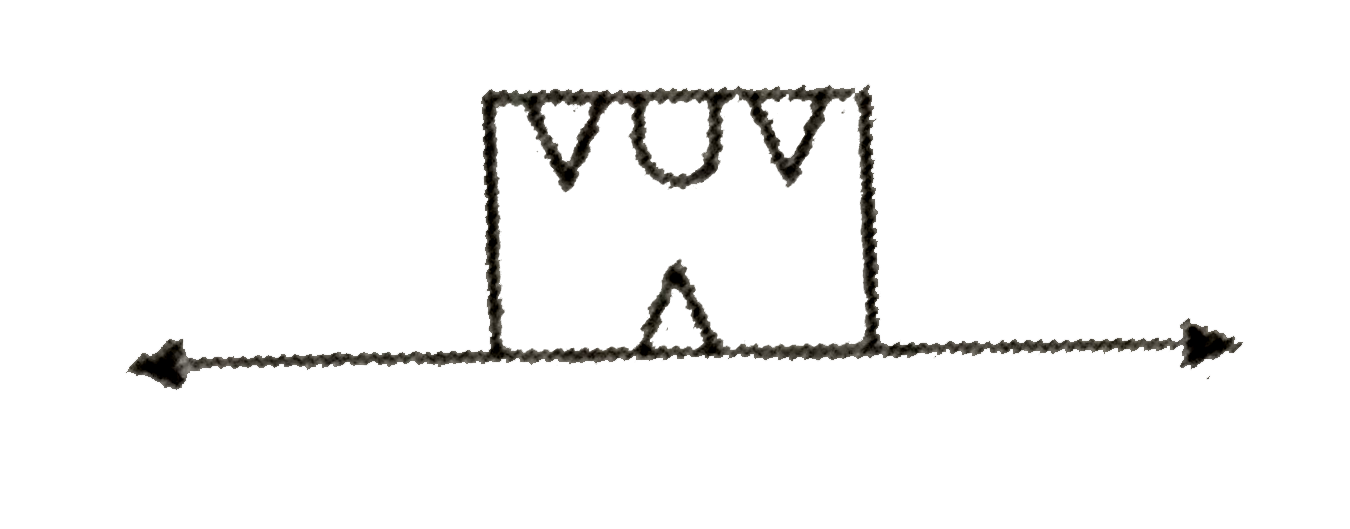 01:02View Solution
01:02View SolutionIn the given figure , PQ and RS are chords of length 10 cm each intersecting at B . If `anglePBS=90^(@)and` the area of `DeltaPBS` is 32 `cm^(2)` , then the length of BR is ________ .
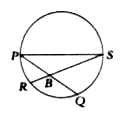 04:06View Solution
04:06View Solution
In the above figure (not to scale), O is the centre of the circle. `bar(BC)` and `bar(CD)` are equal chords. If `/_ OBC =70^(@)` , then find `/_BAD`.02:47View Solution
In the above figure (not to scale), O is the centre of the circle. `bar(AP)` and `bar(BP)` are two chords. C is the point of intersection of `bar(AP)` and `bar(OB)`. If `/_ OAC= 30^(@)` and `/_ PBC =80^(@)`, then `/_ AOB=`05:31View Solution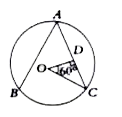
In the above figure , `overline(AB)andoverline(AC)` are equal chords and `overline(OD)` is perpendicular to `overline(AC)` . If `angleCOD=60^(@)`, then the angle between the chords is ______ .05:37View Solution
In the above figure, O is the centre of the circle and `AB=CD`. If `/_ APB=110^(@)`, then find the angle made by the chord CD at the centre.03:00View Solution
In the above diagram (not to scale), `AB=AC=`. O is the centre of the circle. If `/_ ABC =80^(@)`, then `/_ BOC =`01:54View Solution
In the figure above (not to scale), `AB=CD` and `/_A =100^(@)`. `/_ C =`01:36View Solution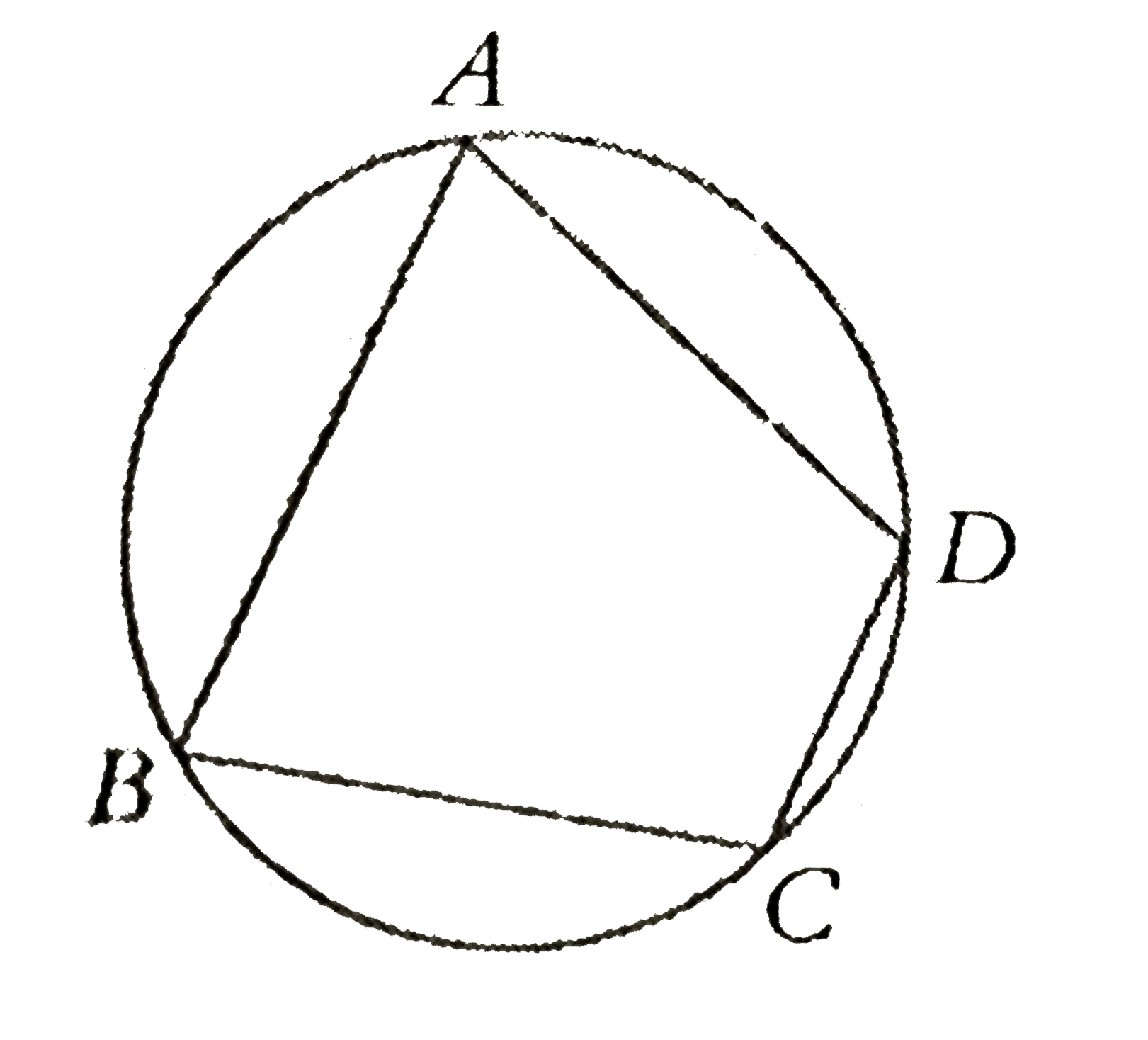
In the above figure, ABCD is a cyclic quadrilateral and `/_BCD =2 /_ BAD`. Find the angle made by the diagonal BD at the centre of the circle.02:52View SolutionIn the below figure, one part of the line of symmetrcy is given. Recongnise the second part.
 01:06View Solution
01:06View Solution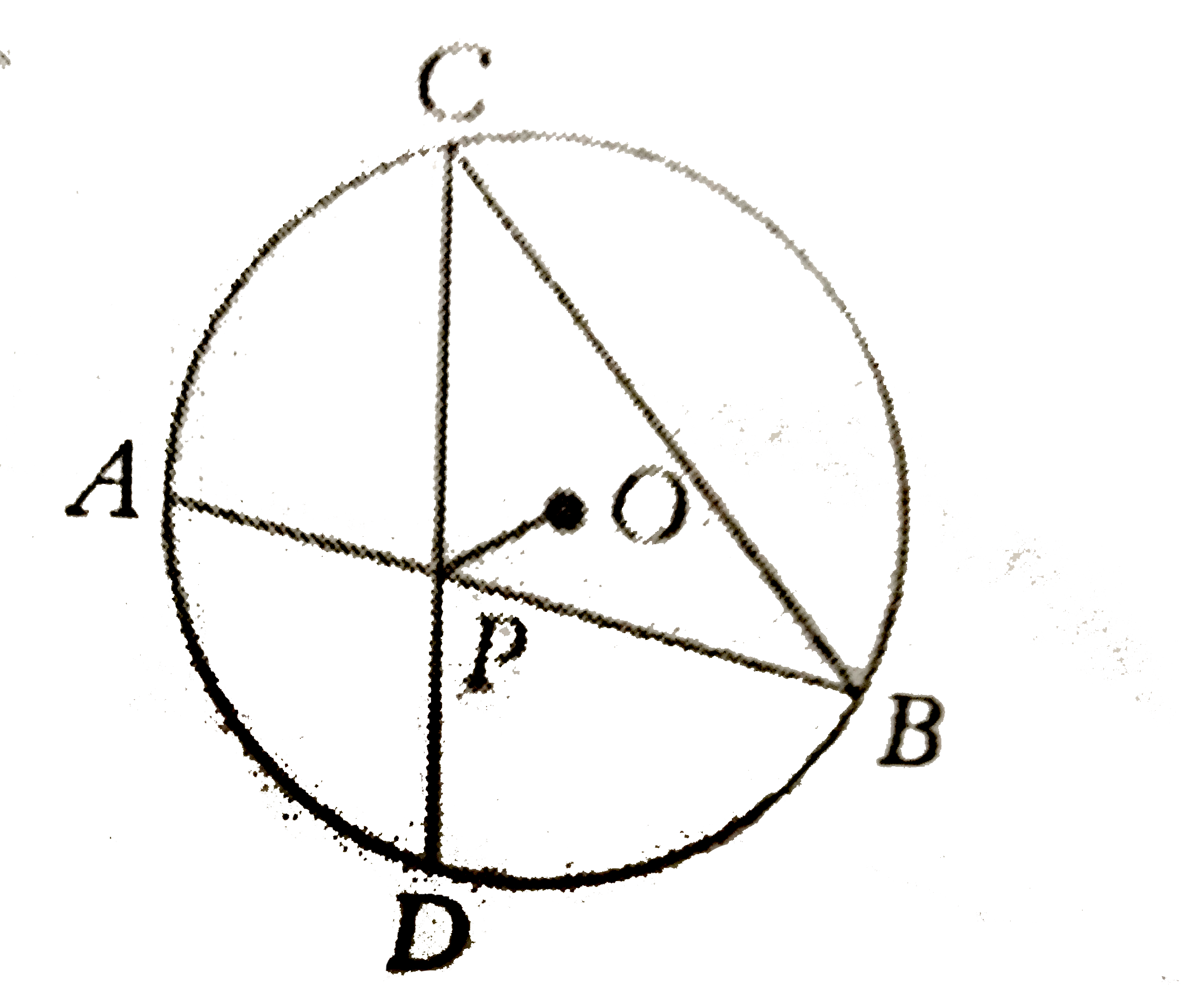 In the above figure , AB and CD are equal chords and O is the centre of the circle. If `/_ OPB =50^(@)`, then `/_ PBD = "____________"`View Solution
In the above figure , AB and CD are equal chords and O is the centre of the circle. If `/_ OPB =50^(@)`, then `/_ PBD = "____________"`View Solution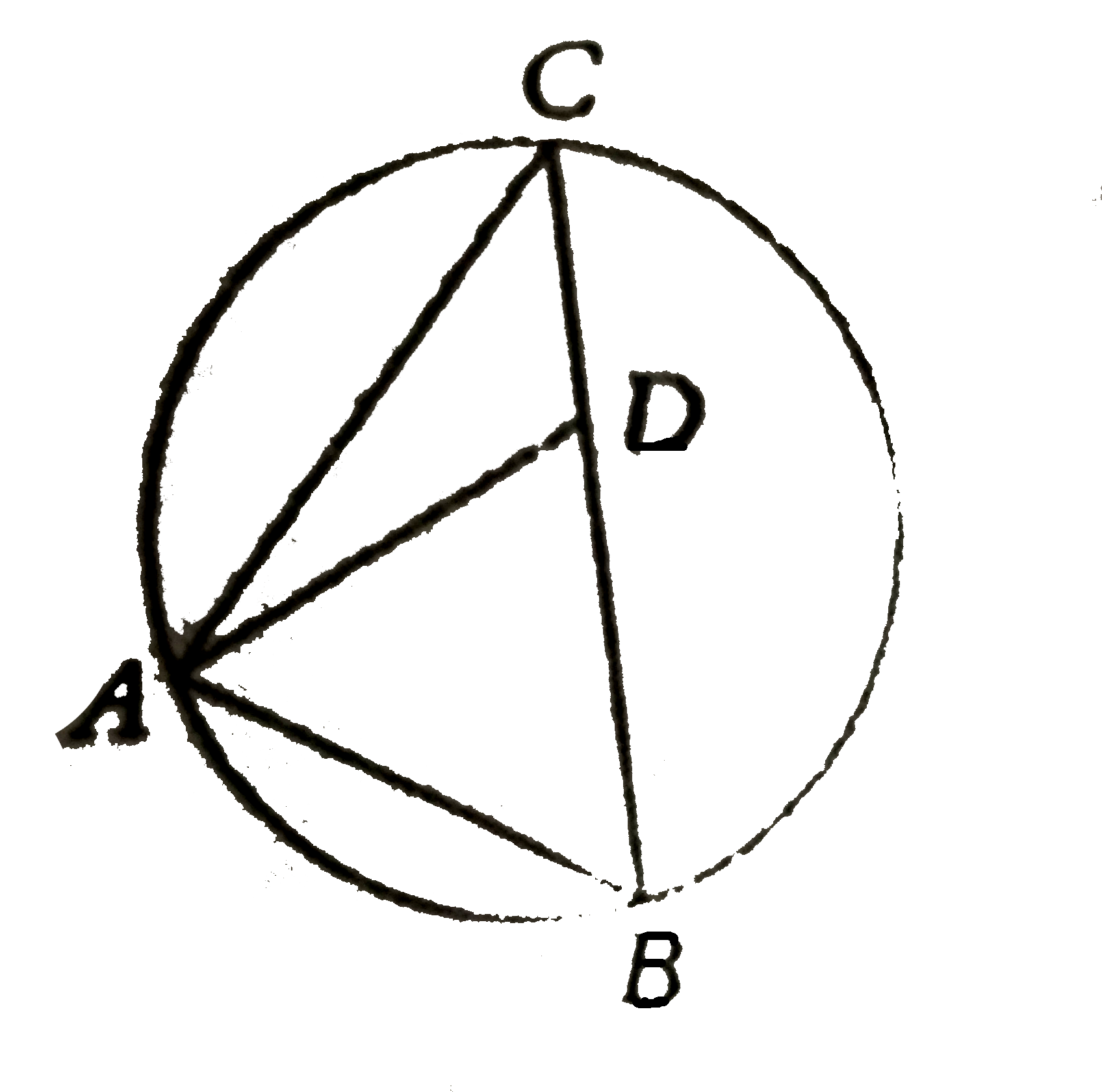 In the given figure, `/_DBA=2 /_DAB = 4/_ CAD`.
In the given figure, `/_DBA=2 /_DAB = 4/_ CAD`.
If `/_ ADC =120^(@)` , then the angle made by AB at the centre of the circle is04:35View SolutionIn the given figure (not to scale), O is the centre of the circle. A,B,C and D are concyclic and `AB=CD`. If `/_MON =120^(@)`, then find `/_ OPN`.
03:26View SolutionIn the following figure ( not to scale), `/_ ADC =60^(@), /_ BAD =80^(@)` and `/_EBC = 2/_PDE`. Find `/_ APE`.
 04:38View Solution
04:38View SolutionHow many lines of symmetry does the above figure have ?
01:37View Solution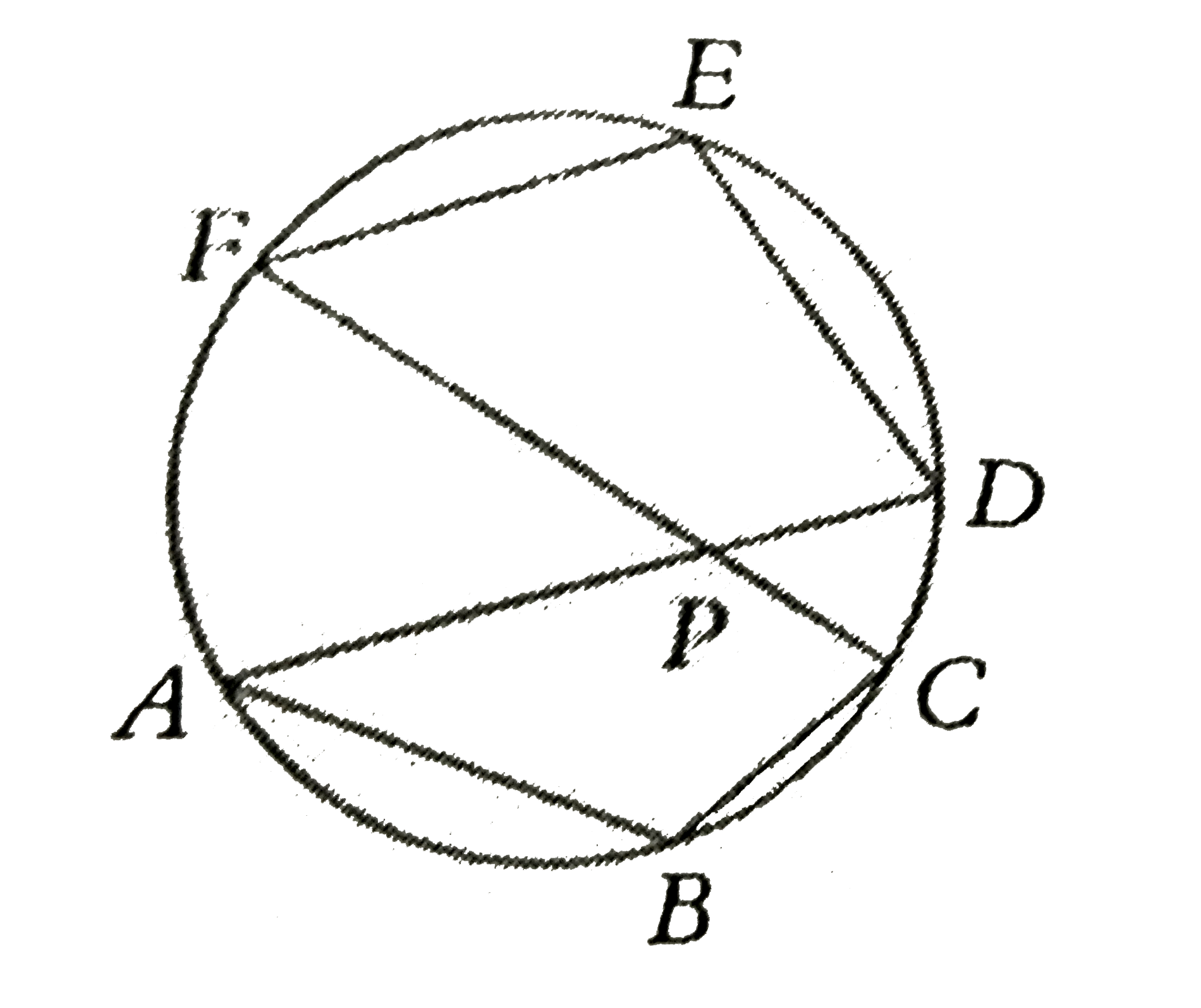 In the above figure (not to scale) `bar(AB),bar(BC),bar(CF),bar(DE)` and `bar(FE)` are chords of the circle. If `/_ ABC =100^(@)` and `/_ FED =110^(@)`, then `/_FPA =` 02:33View Solution
In the above figure (not to scale) `bar(AB),bar(BC),bar(CF),bar(DE)` and `bar(FE)` are chords of the circle. If `/_ ABC =100^(@)` and `/_ FED =110^(@)`, then `/_FPA =` 02:33View SolutionIn the figure given below, `bar(ED)||bar(AB)` and `bar(EF)||bar(BC)`. If `/_FED =40^(@)` and `/_ DEC =20^(@)`, then the angle made by `bar(BC)` at the centre is
02:28View SolutionThe supplement of an angle and the complement of another have a sum equal to half of a complete angle. If the greater angle is `10^(@)` more than the smaller , find the smaller angle.
02:21View SolutionABCD is a trapezium in which `AB ||CD, AB =20cm, BC =10` cm, `CD =10` cm and `AD =10` cm . Find `/_ADC`
03:39View SolutionP is an interior point of quadrilateral ABCD and `AB =3.5`cm, `BC =4 cm, CD=4.8 cm ` and `AD =3.7 ` cm . Then which of the following can be the possible value of `(AP+BP+CP+DP)` ?
02:50View SolutionThe angles of a triangle are in the ratio `2:3:4` . Find them
The following are the steps involved in solving the above problem.
Arrange them in sequential order from the first to the last.
(A) `2x+3x+4x=180^(@)`
`implies 9x= 180^(@)implies x=20^(@)`
(B) Let the angles be A,B and C. Given `A:B:C=2:3:4`
`implies A=2x,B=3x=C=4x`
(C ) We know that the sumf of the angles of a triangle is `180^(@), ie., A+B+C=180^(@)`
(D) The angles are `:A=2(20^(@))=40^(@),B=3(20^(@))= 60^(@)` and `C=4(20^(@))=80^(@)`.02:28View SolutionProve that each of the following diagonals of a parallelogram divides it into two congurent triangles. The following lowing are the steps involved in proving the above results. Arrange them in sequential order.
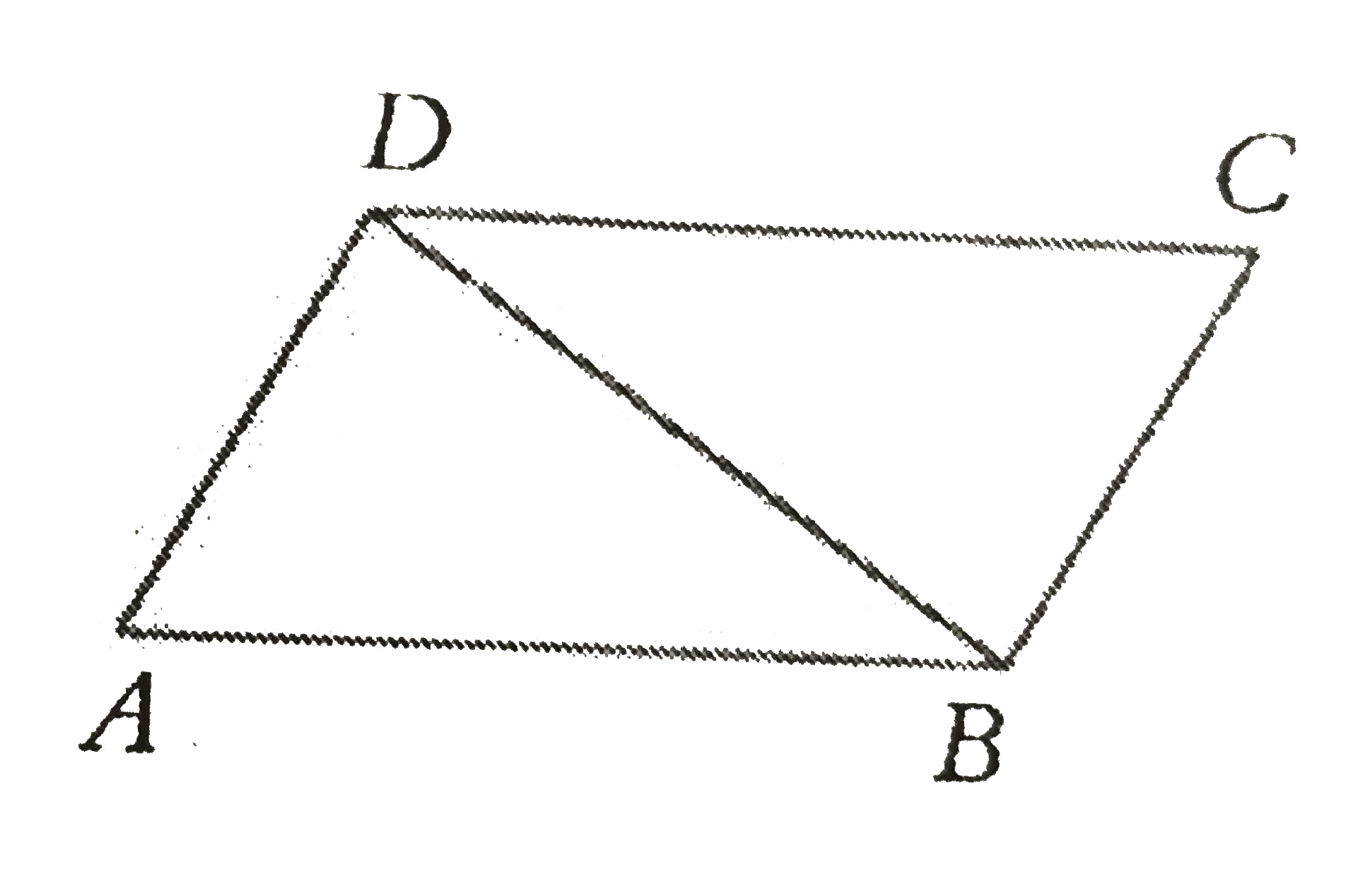
(A) By SSS conguruence property , `Delta DAB ~= Delta BCD`.
(B) Let ABCD be a parallelogram and join BD.
(C ) `AB=CD,AD=BC`(opposite sides of parallelogram) and `BD =BD` (common side).
(D ) Similarly , AC divides the parallelogram into two congruent triangles.03:13View Solution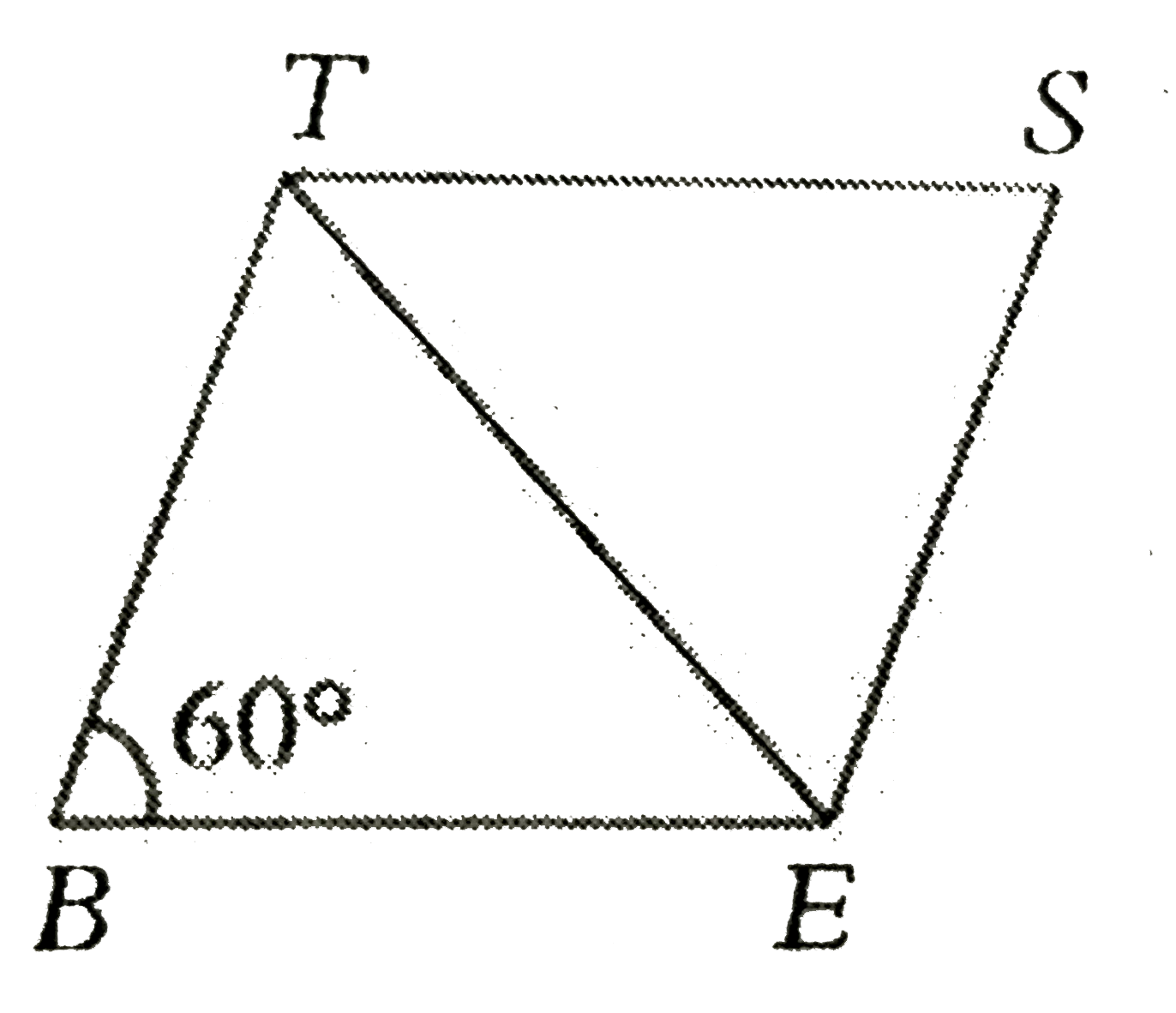
In a rhombus BEST,if `/_ B=60^(@)` and `BT =6cm`, then find the length of the diagonal TE.
The following are the steps involved in solving the above problem. Arrange them in sequential order.
(A) `implies Delta` BTE is an equilateral triangle.
(B) Join T and E
(C ) In `Delta BET, BT=BE implies /_ BTE =/_ BET =(180^(@)-60^(@))/(2)=60^(@) ( :' /_ B=60^(@))` .
(D) `TE=6 `cm03:16View SolutionThe following sentences are the steps involved in construction of the incircle for the triangle XYZ in which `/_Y =90^(@), XZ=6` cm and `YZ =4` cm.
Arrange them in sequential order from the first to the last.
(A) Mark the foot of the perpendicular from I onto YZ as D.
(B) Construct the triangle XYZ with `/_ Y =90^(@),XZ=6` cm and `YZ =4 cm`.
(C ) Draw a circle with I as the centre and ID as radius. This is the required incircle.
(D) Draw the bisectors of `/_ X, /_ Y` and `/_Z` and mark their point of concurrence as I.02:45View Solution
Level 1 questions and complete solutions for chapter GEOMETRY of PEARSON IIT JEE FOUNDATION of Class 8
